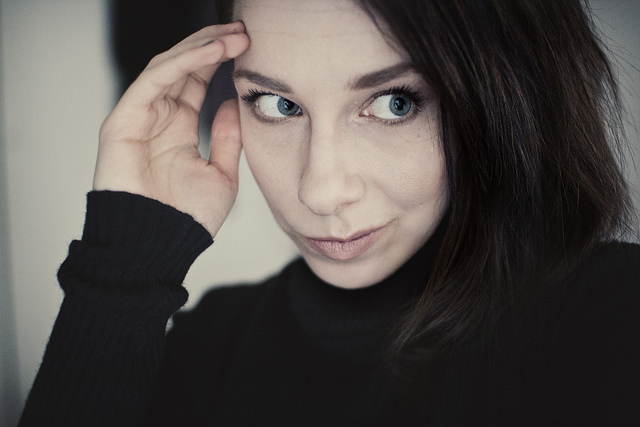side-eye

side-eye – sostantivo
side-eye – verbo
give someone the side-eye – locuzione
He gave me the sexy side-eye, which made me laugh.
I read that he and his estranged wife are back together. * side-eye *
I will side-eye you if you judge people for their weight.
People give you the side-eye when you tell them that your baby sleeps through the night.
Lanciare un’occhiata di traverso a qualcuno, o give someone the side-eye, può esprimere diversi stati d’animo tra cui curiosità, sospetto, disapprovazione, disprezzo o incredulità ed è utilissimo per manifestare i propri sentimenti senza parlare: basta l’espressione del viso.
Questo sguardo si presta bene all’uso dei social, con esempi particolarmente espressivi che sono diventati dei meme da inserire nelle conversazioni online per generare un effetto umoristico. Chissà perché, le donne sembrano particolarmente esperte nell’arte del side-eye, con esponenti di spicco quali Rihanna e Michelle Obama. E naturalmente ci sono anche emoji side-eye, il più noto dei quali è detto ufficialmente ‘faccina contrariata’.
Origini del termine
La recente popolarità di side-eye pare risiedere nella varietà linguistica nota come inglese afro-americano vernacolare. Nonostante la sua rapida diffusione a partire dal 2010, è in uso da molto prima: il sostantivo dal XVIII secolo e il verbo dai primi del XX. Esiste anche l’espressione standard look askance at, che però non si può usare come sostantivo ed è perciò meno flessibile.
Traduzione di Loredana Riu
side-eye – noun
side-eye – verb
give someone the side-eye – phrase
He gave me the sexy side-eye, which made me laugh.
I read that he and his estranged wife are back together. * side-eye *
I will side-eye you if you judge people for their weight.
People give you the side-eye when you tell them that your baby sleeps through the night.
The side-eye is a sidelong glance – literally, looking at someone or something from the corners of your eyes rather than turning your head towards them – that can express many things, including curiosity, suspicion, disapproval, contempt or disbelief. If you can pull it off it exempts you from having to put your feelings into words, because they will be abundantly clear to the recipient from your expression.
The side-eye lends itself to social media, with particularly expressive examples of the look quickly becoming memes that can be inserted into online exchanges for humorous effect. For some reason, women seem to be the most expert practitioners of the side-eye, with famous exponents including the singer Rihanna and ex First Lady Michelle Obama. There are also side-eye emojis, the best-known of which is officially called ‘Unamused Face’.
Origin
Side-eye entered common consciousness around 2010 but it was used long before that date, as far back as the 18th century for the noun and the early 20th for the verb. Like so many of the expressions that enter mainstream usage, its recent popularity has been attributed to its use in the form of English known as African-American Vernacular English (AAVE). It exists alongside the standard expression look askance at, which can’t however be used as a noun, making it less flexible.



